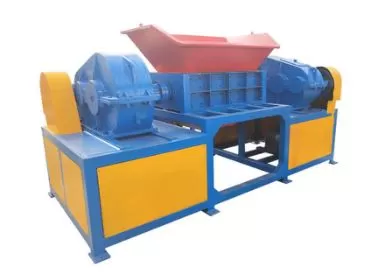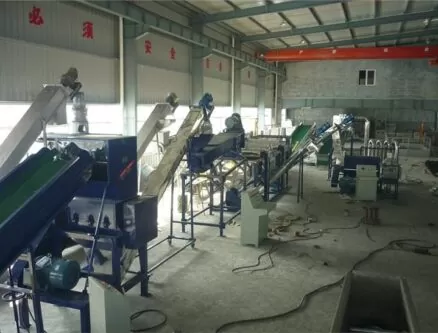Every time I see a plastic bottle tossed in the trash, a small part of me wants to scream. Plastic waste is piling up in landfills and oceans, choking our environment. But here’s the good news—plastic recycling plants are the unsung heroes fighting back. They’re not just factories; they’re environmental warriors in disguise. The problem is, most people have no clue what goes on inside these facilities—or how powerful they really are. So, let me pull back the curtain.
A plastic recycling plant is a facility where used plastic is collected, sorted, cleaned, shredded, melted, and turned into new products or raw materials. These plants help reduce waste, lower carbon emissions, and support a circular economy. Without them, the plastic crisis would spiral out of control.
Sounds technical? Don’t worry. I’m going to walk you through it like you’re my guest on a factory tour—and I’ll even crack a few jokes along the way.

Why do we need plastic recycling plants?
Let’s face it—plastic isn’t going anywhere. Global plastic production exceeds 400 million tons annually, and only 9% of it gets recycled. That’s like making a cake and eating just the frosting.
Landfills are overflowing. Oceans are turning into synthetic soup. Wildlife is choking on our discarded packaging. And the worst part? Most plastics take hundreds of years to degrade.
Plastic recycling plants are the counterattack. They reduce plastic pollution by transforming waste into reusable resources. It’s not just green; it’s genius.
What happens inside a plastic recycling plant?
Think of a recycling plant like a detox spa—but for plastic.
The process starts with collection, where plastics are gathered from bins, curbside pickups, or industrial waste.
Then, we sort the plastics by type: PET, HDPE, LDPE, PP—you name it. Every type has its own melting point and application.
Next comes washing. This part removes dirt, labels, and leftover ketchup from your takeout containers. Yes, it’s gross. Yes, we’ve seen worse.
Then, it’s shredding time. (My favorite part, for obvious reasons.)
The shredded plastic is cleaned again, dried, and then melted or pelletized into a raw form that can be reused to make new products—from clothes to furniture to car parts.
What kind of machines are used?
Ah, now we’re talking my language.
At Amige, we specialize in the big guns: plastic shredders, crushers, granulators, and pulverizers. These machines chew through waste like a bulldog through a steak.
Each machine has a specific job. Some are built for hard plastics like buckets and crates. Others handle soft films or even PET bottles. High-speed cutters, blade rotation, mesh sieves—it’s a beautiful symphony of engineering precision.
Trust me, nothing gets recycled without some serious muscle.

What types of plastic can be recycled?
Most, but not all.
Recyclable plastics include:
- PET (Polyethylene Terephthalate) – used in water bottles
- HDPE (High-Density Polyethylene) – detergent bottles, milk jugs
- PP (Polypropylene) – straws, bottle caps
- LDPE (Low-Density Polyethylene) – plastic bags
But plastics like PVC and PS (Polystyrene) are trickier. They release toxins when melted and often contaminate the recycling stream.
The sorting stage is critical. If we get that wrong, the whole batch can become useless. One rogue plastic bag can ruin a ton of recycled pellets.
Are plastic recycling plants profitable?
Short answer: Yes—if you do it right.
Plastic recycling is a multi-billion-dollar industry. And the demand for recycled plastic is rising, especially with government regulations cracking down on virgin plastic use.
Of course, it’s not all sunshine and rainbows. Running a plant requires:
- Investment in equipment
- Skilled technicians
- Energy costs
- Strict quality control
But once the system is optimized, you’re turning trash into treasure. Some clients even pay for the raw plastic waste, just so we can make it new again.

What are the environmental benefits?
Now we’re getting to the feel-good part.
Every ton of plastic we recycle saves:
- 5,774 kWh of energy
- 98 million BTUs of oil
- 1.8 tons of CO₂ emissions
That’s not just a win—it’s a knockout punch against climate change.
Recycling also reduces the need for landfills, keeps our oceans cleaner, and decreases our dependency on fossil fuels. Plus, we conserve natural resources like water and petroleum.
You know that warm fuzzy feeling you get from doing the right thing? Multiply that by 1000 tons.
What challenges do recycling plants face?
Here comes the twist.
Plastic recycling is not as easy as throwing bottles in a blue bin. We deal with:
- Contamination (greasy pizza boxes, anyone?)
- Sorting errors
- Low collection rates in developing regions
- Fluctuating oil prices that affect the cost of virgin plastic
And then there’s consumer apathy. Many people still don’t sort their trash properly. Some think the system is a scam. (Spoiler alert: it’s not.)
But here’s the kicker: despite all these hurdles, we keep going. Because if we don’t, no one else will.
How can businesses and individuals support recycling?
I’m glad you asked.
If you run a business, start by auditing your plastic use. Partner with local recyclers. Invest in eco-friendly packaging. Use recycled materials in your supply chain.
If you’re just one person at home, don’t underestimate your power. Clean your recyclables. Sort them properly. Educate others. Support policies that promote circular economies.
And hey, if you’re feeling extra ambitious, come talk to me about setting up your own mini recycling line.

Can a recycling plant really make a difference?
Absolutely.
Every plastic fork you recycle might seem small—but scale that up by a million households, and suddenly we’re saving oceans, cutting emissions, and building a cleaner future.
We at Amige believe in making machinery that doesn’t just work—it matters. When I see a client turning shredded plastic into eco-friendly decking or sneakers or car parts, I know we’re on the right track.
Because recycling isn’t just a process. It’s a revolution.
Conclusion
A plastic recycling plant is more than machines and melted bottles. It’s a bridge to a cleaner, smarter, and more sustainable world. Let’s build more of them—together.
